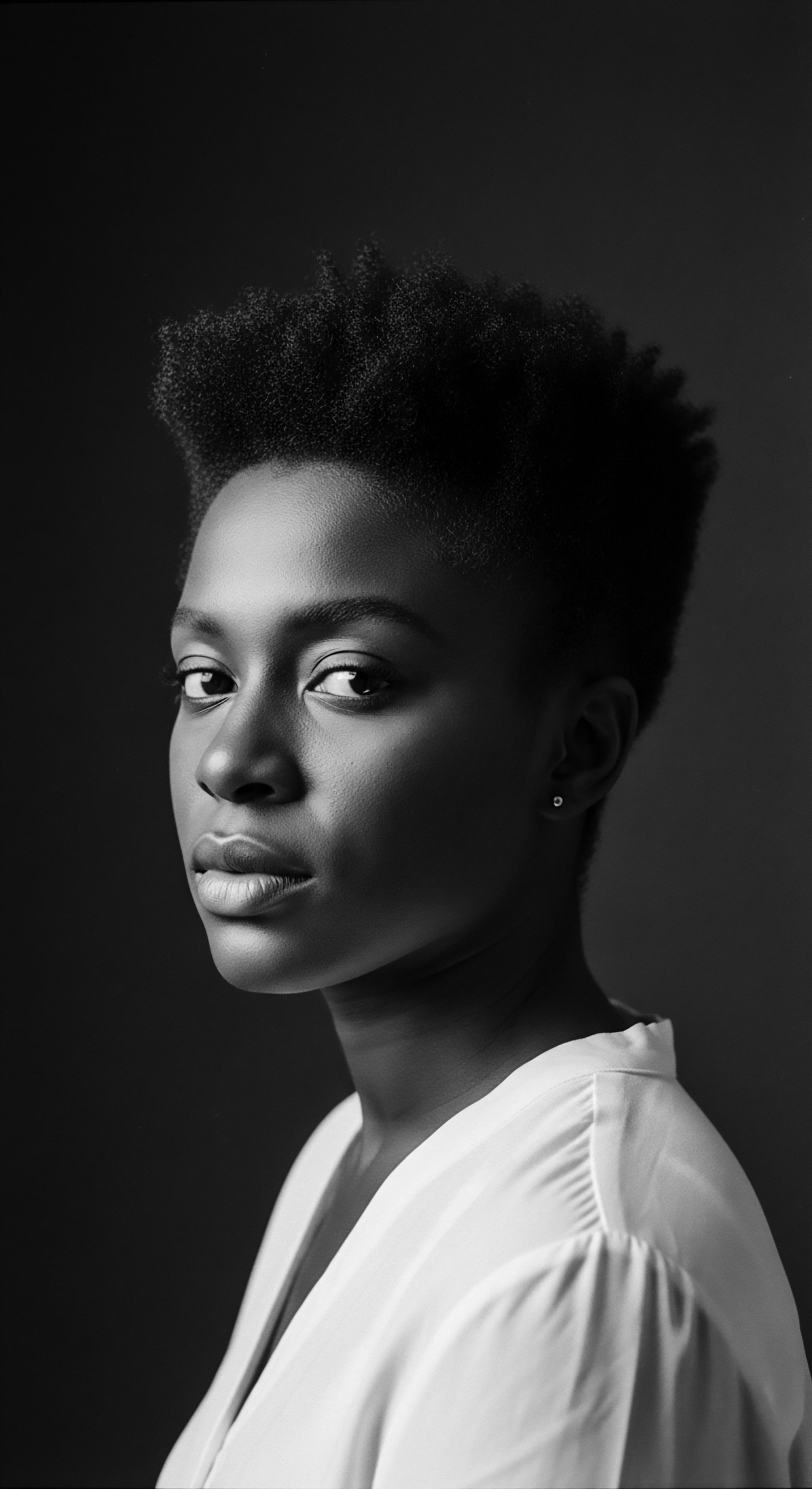
Roots
Consider for a moment the very essence of a strand, a delicate yet resilient helix, especially those that coil and curve in wondrous ways. For those who bear the crown of textured hair, the story of its thirst, its enduring call for moisture and rich emollients, is not merely a contemporary conversation. It is a whispered narrative from the dawn of time, etched into the very design of the hair fiber itself. From the earliest moments of human existence, across continents, a profound understanding of this intrinsic need for oil began to take root, long before microscopes revealed the secrets of the cuticle or the chemistry of sebum.
This is not a modern discovery; it is an ancestral knowing, a testament to generations who observed, adapted, and celebrated the unique requirements of their hair. The biological reasons for textured hair’s pronounced oil needs are woven into its ancestral legacy, a story of adaptation, environment, and the timeless wisdom of care.

The Geometry of Thirst
At its elemental level, the thirst of textured hair begins with its shape, a profound departure from the smoother, straighter forms found across humanity’s diverse follicular expressions. Straight hair, often round or oval in cross-section, allows natural scalp oils—sebum—to glide with relative ease down the hair shaft, coating it uniformly from root to tip. Contrast this with the elliptical, often flattened cross-section of textured strands. This distinct shape compels the strand to twist and turn, forming the tight curls, kinks, and coils that mesmerize us.
Each turn, each bend, presents a challenge for sebum’s journey. Imagine a narrow, winding river trying to navigate a dense, uneven landscape; its flow is impeded, its reach limited. So it is with sebum on a highly coiled strand. The natural lubricant, vital for conditioning and protection, struggles to travel beyond the immediate vicinity of the scalp, leaving the mid-lengths and ends of the hair particularly vulnerable to dryness.
The very structure of textured hair, with its intricate coils and curves, inherently limits the natural distribution of sebum from scalp to tip, creating a biological demand for external moisture.
This inherent structural characteristic also means more points of contact between individual hair strands as they intertwine, increasing friction. Friction, a silent adversary, can lift the protective outer layer of the hair, the cuticle, making it more porous. A raised cuticle is akin to an open door, allowing precious moisture to escape with greater ease. This structural reality makes textured hair inherently more susceptible to dryness and breakage compared to hair types with a smoother, more direct path for oil.
The biological imperative for external oil, then, becomes strikingly clear. It is a compensatory mechanism, an ancestral solution to a physiological design, passed down through the ages.

Hair Anatomy Acknowledging Ancestry
To truly grasp the oil needs, we turn to the microscopic anatomy of textured hair, acknowledging that scientific understanding often echoes ancestral observation. The hair follicle itself, from which the strand emerges, exhibits variations across different hair types. In textured hair, the follicle often has a more asymmetrical shape, causing the hair shaft to grow out in a curved manner. This curvature dictates the coiling pattern of the hair as it grows, reinforcing the earlier point about sebum distribution.
Beyond the macroscopic shape, the microscopic components—the cuticle, cortex, and medulla—all play their part. The cuticle, the outermost layer comprised of overlapping scales, offers the first line of defense. In textured hair, these cuticle scales are often less tightly packed or lie less flat than those on straight hair, creating more opportunities for moisture loss. This is not a flaw, but a characteristic, one that speaks to evolutionary adaptations and, crucially, demands a particular kind of tender care.
The cortex, the central body of the hair, provides strength and elasticity. Its protein matrix, while robust, can still suffer from dehydration, leading to brittle strands if not properly hydrated and sealed. And finally, the medulla, the innermost core, whose role is still somewhat debated, may influence the overall integrity and thermal conductivity of the hair.
When we speak of oil needs, we are speaking to the entire architectural integrity of the strand, from the scalp’s natural offerings to the outermost protective shield, all of which are uniquely calibrated in textured hair. Ancestral practices, as we shall see, instinctively understood this interplay, providing external oils and butters that mimicked or augmented the scalp’s own efforts.

How Does Follicle Shape Influence Natural Oil Flow?
The shape of the hair follicle beneath the skin’s surface profoundly influences how sebum travels along the hair shaft. For textured hair, the follicle is typically curved or helical, meaning the hair strand itself emerges and grows in a spiraling, non-linear fashion. This corkscrew growth pattern means that the sebum, produced by the sebaceous glands adjacent to the follicle, encounters a tortuous path as it attempts to descend.
Instead of a straight slide, it faces constant turns, dips, and rises. This physical impediment means that a significant portion of the natural oil remains concentrated near the scalp, leaving the mid-shaft and ends comparatively drier.
This inherent biological constraint meant that ancestral communities developed ingenious methods of direct application. They knew, without needing a diagram of a follicle, that the ends of their hair felt parched, and that massaging nourishing oils directly onto the lengths provided the needed relief. This direct, intentional application became a fundamental part of hair care rituals, a practical solution born from observant interaction with their hair’s natural tendencies.

Ritual
The understanding of textured hair’s biological oil needs was never confined to abstract science; it materialized in the tangible acts of care, evolving into the rich tapestry of ancestral rituals. These rituals, passed down through generations, are not merely cosmetic routines. They are deeply cultural expressions, acknowledgments of the hair’s unique requirements, and profound connections to heritage.
The frequent and intentional application of oils and butters was a cornerstone of these practices, a living testament to an intimate knowledge of the hair’s very design. From the sun-drenched savannas to the humid river basins, indigenous knowledge systems developed sophisticated approaches to hair hydration, utilizing the bounties of their environment.
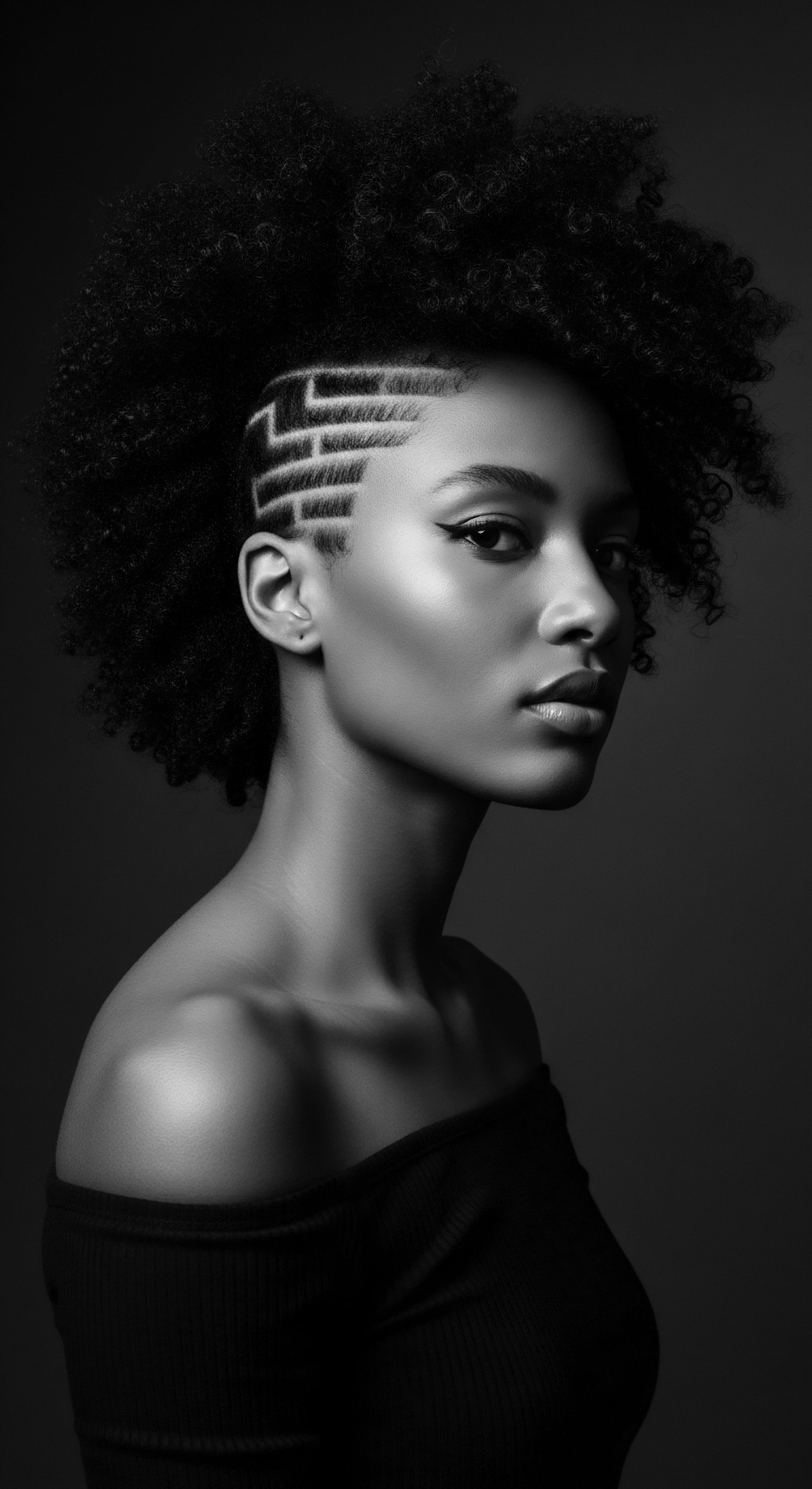
Ancestral Wisdom of Lubrication
Centuries before the advent of modern hair products, communities across Africa and the diaspora intuitively understood the protective and nourishing power of natural oils. They recognized the unique propensity of textured hair to dry out, a condition they remedied with readily available botanical resources. The systematic application of these substances was not arbitrary; it was a response to the hair’s architecture, its natural resistance to even sebum distribution. This wisdom formed the bedrock of daily and weekly hair care, often performed communally, strengthening bonds as much as hair strands.
- Shea Butter ❉ From the karite tree, cultivated across West Africa for millennia, this rich, emollient butter provided a protective coating, locking in moisture and adding a soft sheen. Its historical and widespread use in regions like Ghana, Nigeria, and Burkina Faso speaks to its efficacy in providing lubrication and sealing moisture, particularly for hair often exposed to harsh elements.
- Palm Oil ❉ Present in many West African cultures, palm oil was utilized not only for cooking but also for hair and skin care, prized for its conditioning properties.
- Coconut Oil ❉ A staple in many coastal African and diasporic communities, including the Caribbean, known for its ability to penetrate the hair shaft and reduce protein loss, offering internal and external protection.
- Castor Oil ❉ Widely used in Jamaican traditions, particularly the black castor oil, revered for its density and perceived ability to fortify strands and moisturize the scalp, acknowledging the scalp as the source of natural oils.
These practices illustrate a sophisticated understanding of how to compensate for the hair’s biological tendencies. The very act of applying these oils, often with gentle massage, also served to stimulate blood flow to the scalp, subtly encouraging natural sebum production and aiding in its spread. This physical interaction with the hair became a form of communication, a quiet dialogue between caregiver and recipient, acknowledging the strand’s inherent needs.
| Aspect of Oil Need Sebum Distribution |
| Ancestral Understanding / Practice Direct application of plant butters and oils to lengths and ends to compensate for natural oil's inability to travel down coiled strands. |
| Contemporary Scientific Perspective Coil patterns impede sebum flow due to tortuous path; external oils supplement this deficit, providing necessary emollience. |
| Aspect of Oil Need Cuticle Protection |
| Ancestral Understanding / Practice Oiling before styling or exposure to elements (sun, dust) to create a protective barrier. |
| Contemporary Scientific Perspective Oils seal the cuticle, reducing moisture evaporation and providing a physical shield against environmental aggressors and friction. |
| Aspect of Oil Need Hair Elasticity & Strength |
| Ancestral Understanding / Practice Regular oiling as a preventative measure against dryness, brittleness, and breakage during daily activities or styling. |
| Contemporary Scientific Perspective Lipids from oils lubricate the hair shaft, improving flexibility and reducing the likelihood of fracture, contributing to overall strand integrity. |
| Aspect of Oil Need These parallels highlight the continuity of wisdom, linking ancient methods with modern biological insights into textured hair care. |
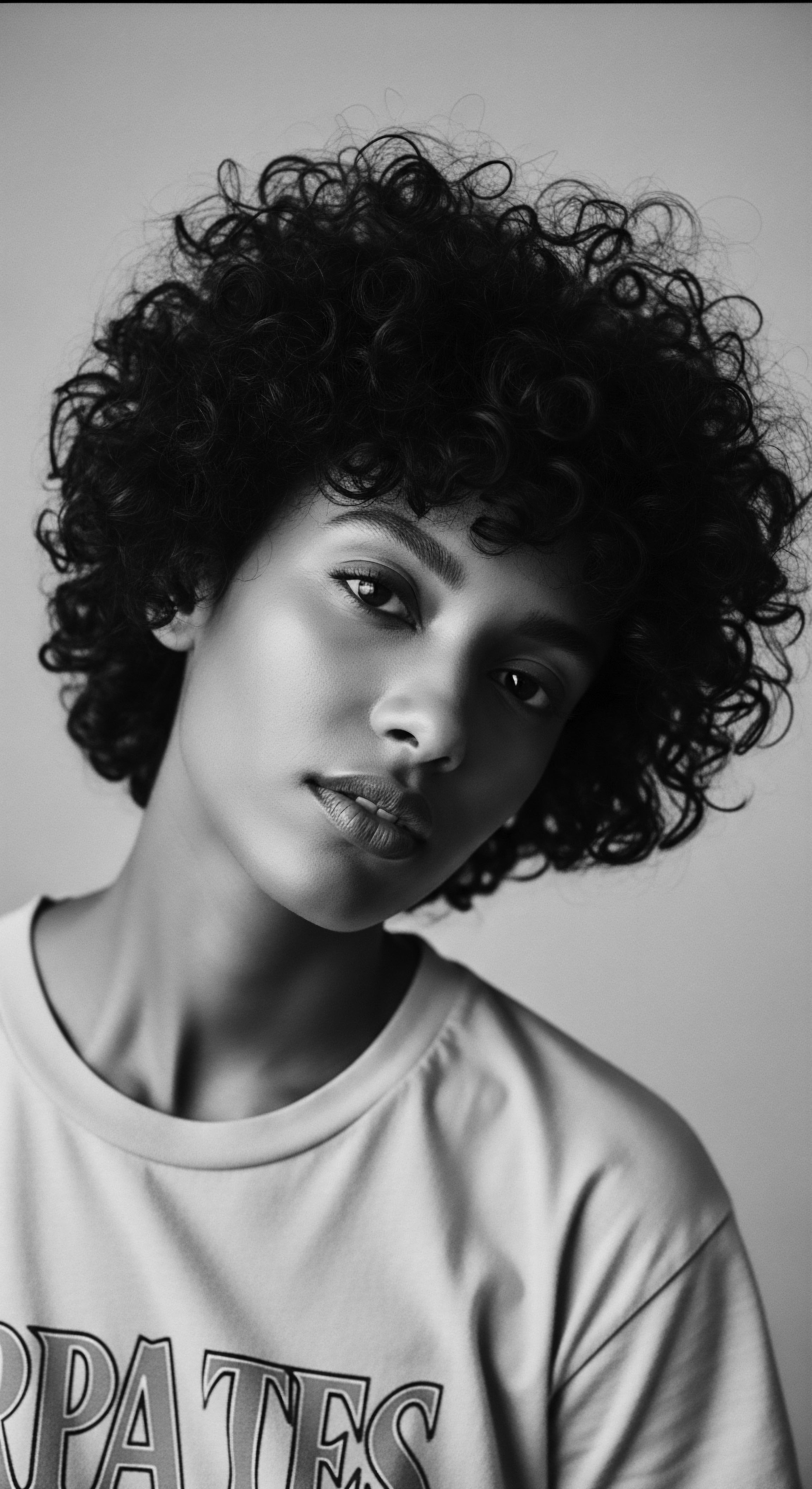
How Did Ancient Societies Address Hair Porosity?
While the term ‘porosity’ is a modern scientific construct, ancestral societies intuitively addressed the phenomena it describes. They observed that some hair types felt rougher, absorbed moisture quickly only to lose it just as fast, or became brittle more readily. This observation, though not articulated in terms of ‘cuticle scales’ or ‘hydrophilic surfaces,’ led to practices that served the same purpose ❉ sealing and conditioning.
The consistent application of rich, heavy oils and butters formed a protective layer, much like a natural sealant. This external barrier helped to smooth the hair’s outer surface, reducing the rate at which water escaped.
Consider the historical use of mixtures, often combining a lighter oil for penetration with a heavier butter for sealing. This layering approach, a hallmark of many traditional practices, was a practical solution to what we now understand as porosity management. It speaks to a deep, experiential understanding of hair’s needs, developed through generations of trial and meticulous observation. This legacy reminds us that true hair wellness is not just about isolated scientific facts, but about the profound connection between human experience, natural resources, and the inherent biology of our strands.
Traditional oiling rituals were not random acts, but sophisticated responses to hair’s innate structural challenges, ensuring vitality and resilience across generations.

Relay
The journey of understanding textured hair’s oil needs from its elemental biology to its embodiment in ancestral ritual does not end in the past. It continues, a living current, influencing contemporary care and reinforcing the profound connection between science, culture, and identity. The biological reasons for textured hair’s thirst for oil, once understood through observation and tradition, are now illuminated by molecular insights, yet the core truth remains unchanged.
This relay of knowledge, from elder to child, from ancient practice to modern regimen, underscores the enduring significance of heritage in shaping our approach to hair wellness. The insights gained from cellular biology today often affirm the efficacy of practices dating back centuries, creating a harmonious dialogue across time.
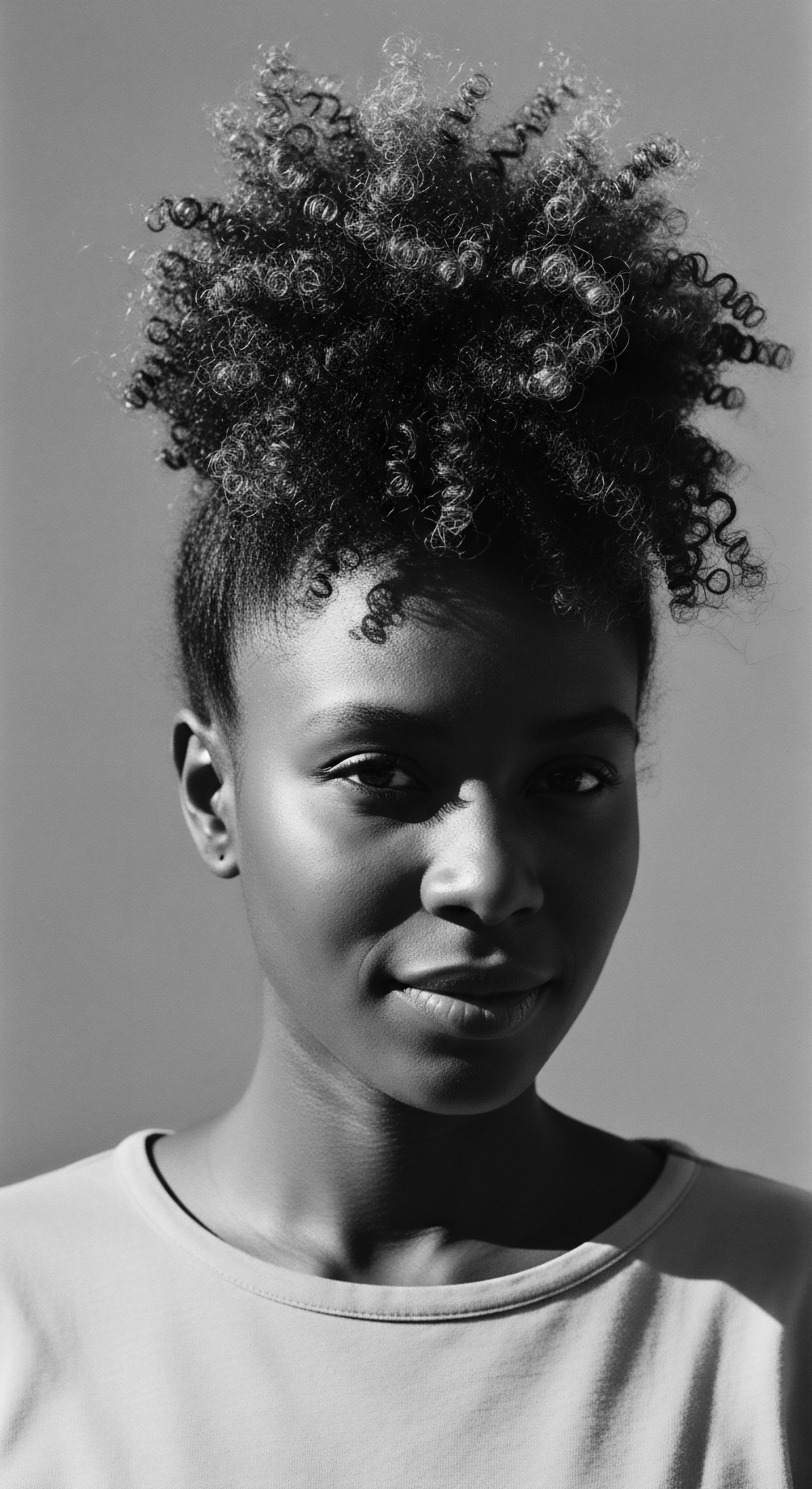
Microscopic Truths and Macro-Care
Contemporary scientific inquiry provides a sharper lens through which to examine the innate characteristics of textured hair that necessitate its unique oil requirements. Research into the cellular architecture of hair strands reveals further complexities. The unevenness of the hair shaft, especially pronounced at the curves and bends of coils, can create areas of structural weakness. These points, where the protein matrix might be slightly thinner or the cuticle more exposed, are particularly susceptible to damage if not adequately lubricated.
Sebum, our body’s natural conditioning agent, is lipophilic, meaning it repels water. Its primary role is to form a protective film, reducing moisture loss and maintaining the pliability of the hair. When this film is incomplete or insufficient, the hair’s internal moisture evaporates, leading to dryness, brittleness, and an increased risk of breakage.
Moreover, studies have indicated variations in the chemical composition of sebum itself, and how environmental factors—such as humidity or arid climates—interact with it. In dry environments, the scalp may produce less sebum, or the sebum may become more viscous, further impeding its flow. Conversely, in highly humid conditions, the hair, if not properly sealed, can absorb excess atmospheric moisture, leading to swelling and lifting of the cuticle, paradoxical frizz, and subsequent moisture loss as the humidity drops. Oils act as an essential barrier against these environmental fluctuations, mediating the hair’s interaction with its surroundings.
Consider the seminal work by Françoise et al. (2012) on the biophysical properties of various hair types, which describes how the inherent helical shape of textured hair creates a tortuous path for lipids to coat the strand uniformly. This research quantified what ancestral generations intuitively knew ❉ the structural reality of textured hair demands supplemental external lubrication to maintain integrity and prevent desiccation. Their findings substantiate the persistent need for emollients, confirming that the physical barriers to natural oil distribution are significant.
| Biological Factor Helical Hair Shape |
| Scientific Explanation of Need Impedes uniform sebum distribution, leaving lengths and ends dry and susceptible to friction. |
| Heritage-Informed Care Response Systematic oiling or butter application from root to tip, especially during detangling and styling. |
| Biological Factor Lifted Cuticle Scales |
| Scientific Explanation of Need Increases porosity, leading to accelerated moisture loss from the hair's cortex. |
| Heritage-Informed Care Response Layering of conditioning agents and sealing oils, often in multi-step routines, to smooth and protect the outer layer. |
| Biological Factor Increased Surface Area |
| Scientific Explanation of Need More points of contact between strands and greater exposure to environmental elements. |
| Heritage-Informed Care Response Protective styling (braids, twists) and regular oiling to minimize external damage and maintain internal hydration. |
| Biological Factor The symbiotic relationship between textured hair's biology and its ancestral care traditions speaks to an enduring wisdom. |
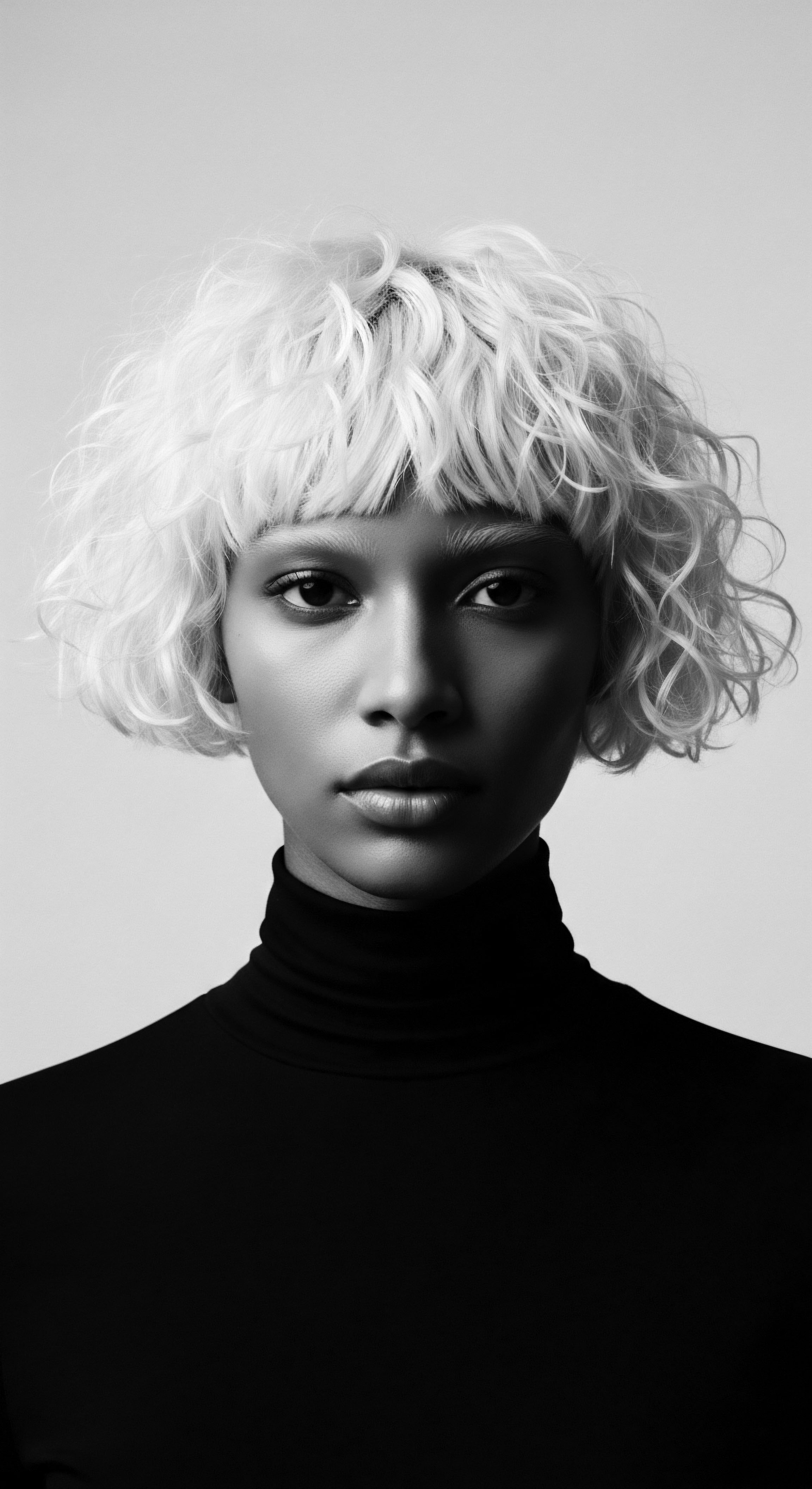
How Does Understanding Sebum Secretion Inform Modern Regimens?
Understanding the biological rhythms of sebum secretion and its journey along the hair shaft deeply informs the construction of effective textured hair regimens today. Sebaceous glands, nestled within the skin, are busiest, typically, in the days immediately following a wash. This period allows the natural oils to accumulate at the scalp.
For textured hair, this accumulation does not readily translate to full-strand coverage. This biological reality dictates the need for consistent re-application of external oils, often every few days, to compensate for the impeded flow and the hair’s inherent porosity.
The profound need for external oils in textured hair is a biological mandate, driven by its unique structure, affirming centuries of ancestral wisdom.
Modern regimens, therefore, frequently incorporate “LOC” or “LCO” methods—Liquid, Oil, Cream or Liquid, Cream, Oil—a sequence designed to first hydrate (liquid), then nourish and seal (oil/cream). This layering approach, in essence, replicates and refines ancestral practices. It acknowledges that the scalp alone cannot provide sufficient lubrication for the entire length of a coiled strand. The selection of specific oils, too, becomes a more informed decision.
Lighter, penetrating oils might be chosen for their ability to deliver fatty acids to the cortex, while heavier, occlusive oils and butters are preferred for their superior sealing properties, effectively mimicking the natural barrier that sebum attempts to form. This deliberate choice of emollients, guided by both science and a deep respect for historical trial-and-error, allows individuals to tailor their care to their specific strand type and environment. The ongoing dialogue between biological understanding and care practice ensures that the legacy of heritage continues to serve and protect the beautiful diversity of textured hair.
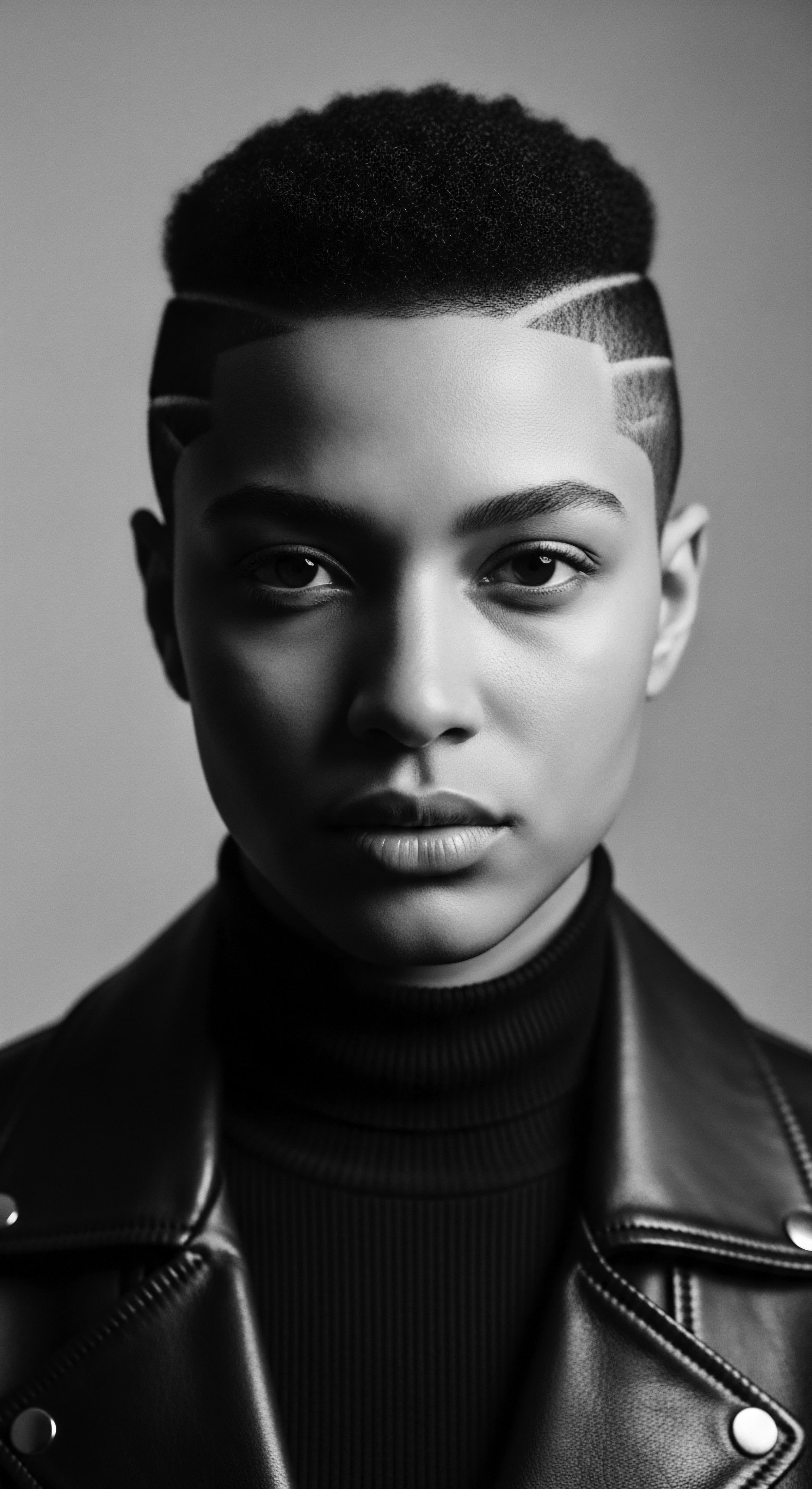
Reflection
The enduring narrative of textured hair’s oil needs is a profound meditation on interconnectedness—of biology and heritage, of the individual strand and the communal spirit of care. It is a story that begins at the very root, in the elliptical cross-section of a follicle, and spirals outward through the millennia, touching every hand that has ever lovingly applied a rich butter or glistening oil. The intrinsic call for lubrication, born from the remarkable geometry of coiling strands and their earnest propensity for moisture loss, finds its eloquent reply in the ancestral practices of oiling, greasing, and sealing. These were not random acts, but deeply informed responses to a biological truth, transformed into rituals that reinforced cultural identity and resilience.
To truly understand this need is to honor the ingenuity of those who came before us, observing the very nature of their hair and crafting solutions from the earth around them. Their wisdom, passed down through the Tender Thread of oral tradition and lived experience, laid the foundational knowledge that modern science now validates and amplifies. The Soul of a Strand, then, is not merely a metaphor; it is the living archive of this journey, where every curve and coil holds the memory of ancestral touch, every drop of oil a continuation of a sacred dialogue between self and heritage. As we continue to voice our identities through our unbound helices, we carry forward a legacy of care, recognizing that the biological imperative for oil is, at its heart, a beautiful echo from the source, binding us to a rich and vibrant past, and guiding us toward a future where every textured crown shines with health and purpose.
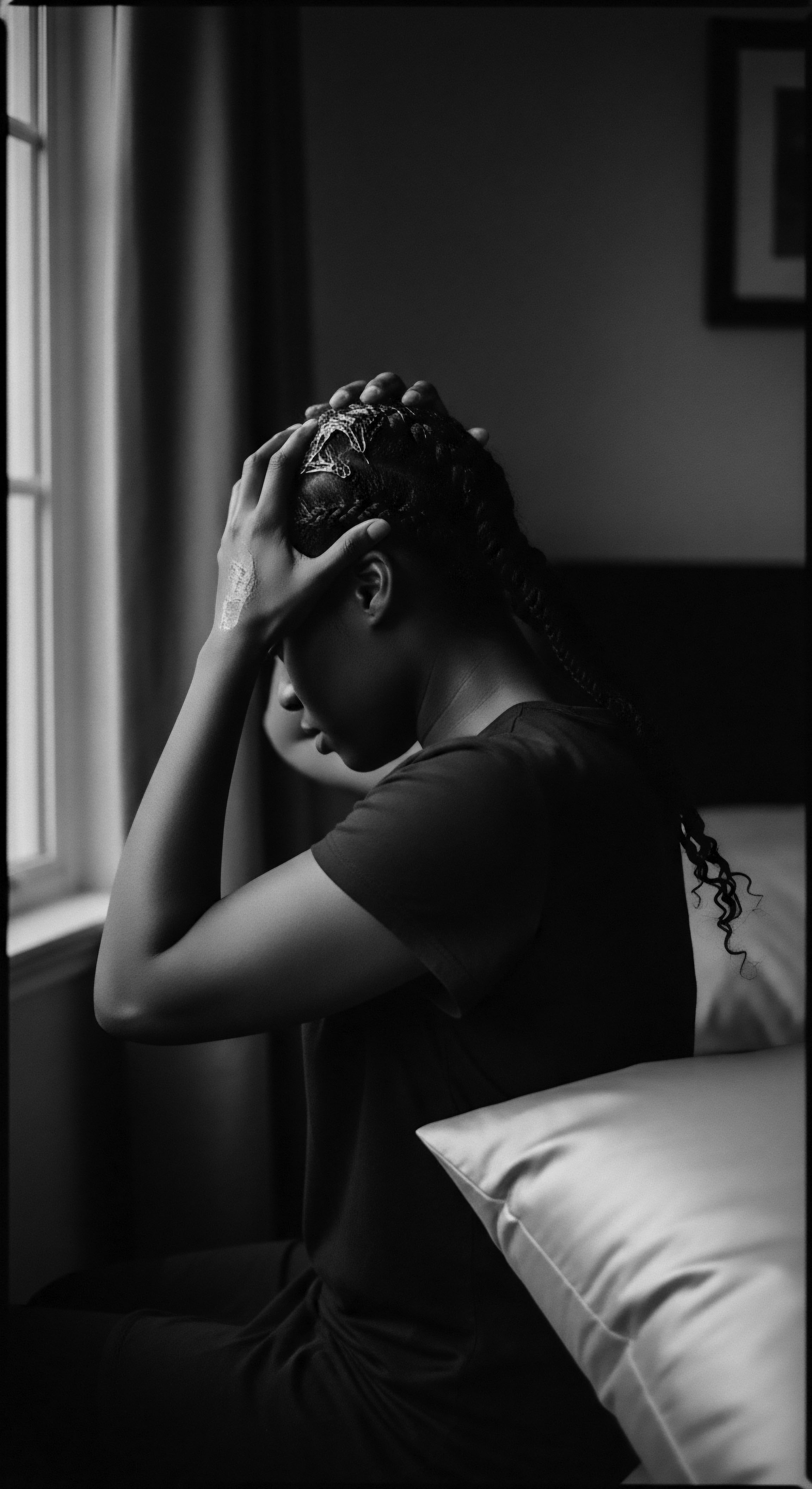
References
- Françoise, N. et al. (2012). The Biophysical Properties of Human Hair ❉ A Comprehensive Review. International Journal of Cosmetic Science, 34(3), 209-218.
- Gannaway, G. (2014). African-American Hair ❉ An Atlas of Scalp and Hair Disorders. CRC Press.
- Robbins, C.R. (2012). Chemical and Physical Behavior of Human Hair. Springer Science & Business Media.
- Draelos, Z.D. (2011). Cosmetic Dermatology ❉ Products and Procedures. Wiley-Blackwell.
- Bouillon, C. & Wilkinson, J.B. (2005). The Science of Hair Care. CRC Press.
- Adekunle, A.A. (2009). African Traditional Medicine ❉ A Guide to Plants, Treatments and Wellbeing. Oxford University Press.
- Branch, M. (2015). African American Hair ❉ Care, Culture, and Consciousness. University Press of Mississippi.
